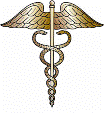Public Health Resources
Date of this Version
2005
Abstract
Background: To evaluate the risk of the adult glioma associated with farming and agricultural pesticide use, the authors conducted a population based case control study in eastern Nebraska.
Methods: Telephone interviews were conducted with men and women diagnosed with gliomas (n = 251) between 1988 and 1993 and controls (n = 498) randomly selected from the same geographical area. Unconditional logistic regression was used to calculate adjusted odds ratios (ORs) for farming and for use of individual and chemical classes of insecticides and herbicides, including pesticides classified as nitrosatable (able to form N-nitroso compounds upon reaction with nitrite). Non-farmers were used as the reference category for all analyses.
Results: Among men, ever living or working on a farm and duration of farming were associated with significantly increased risks of glioma (>55 years on a farm OR= 3.9, 95% CI 1.8 to 8.6); however, positive findings were limited to proxy respondents. Among women, there were no positive associations with farming activities among self or proxy respondents. Specific pesticide families and individual pesticides were associated with significantly increased risks among male farmers; however, most of the positive associations were limited to proxy respondents. For two herbicides and three insecticides, use was positively associated with risk among both self and proxy respondents. Based on a small number of exposed cases, ORs were significantly increased for the herbicides metribuzin (OR = 3.4, 95% CI 1.2 to 9.7) and paraquat (OR = 11.1, 95% CI 1.2 to 101), and for the insecticides bufencarb (OR = 18.9, 95% CI 1.9 to 187), chlorpyrifos (OR = 22.6, 95% CI 2.7 to 191), and coumaphos (OR = 5.9, 95% CI 1.1 to 32).
Conclusion: The authors found significant associations between some specific agricultural pesticide exposures and the risk of glioma among male farmers but not among female farmers in Nebraska; however, most of the positive associations were limited to proxy respondents. These findings warrant further evaluation in prospective cohort studies where issues of recall bias are not a concern.


Comments
Published in Occup Environ Med 2005;62:786–792.